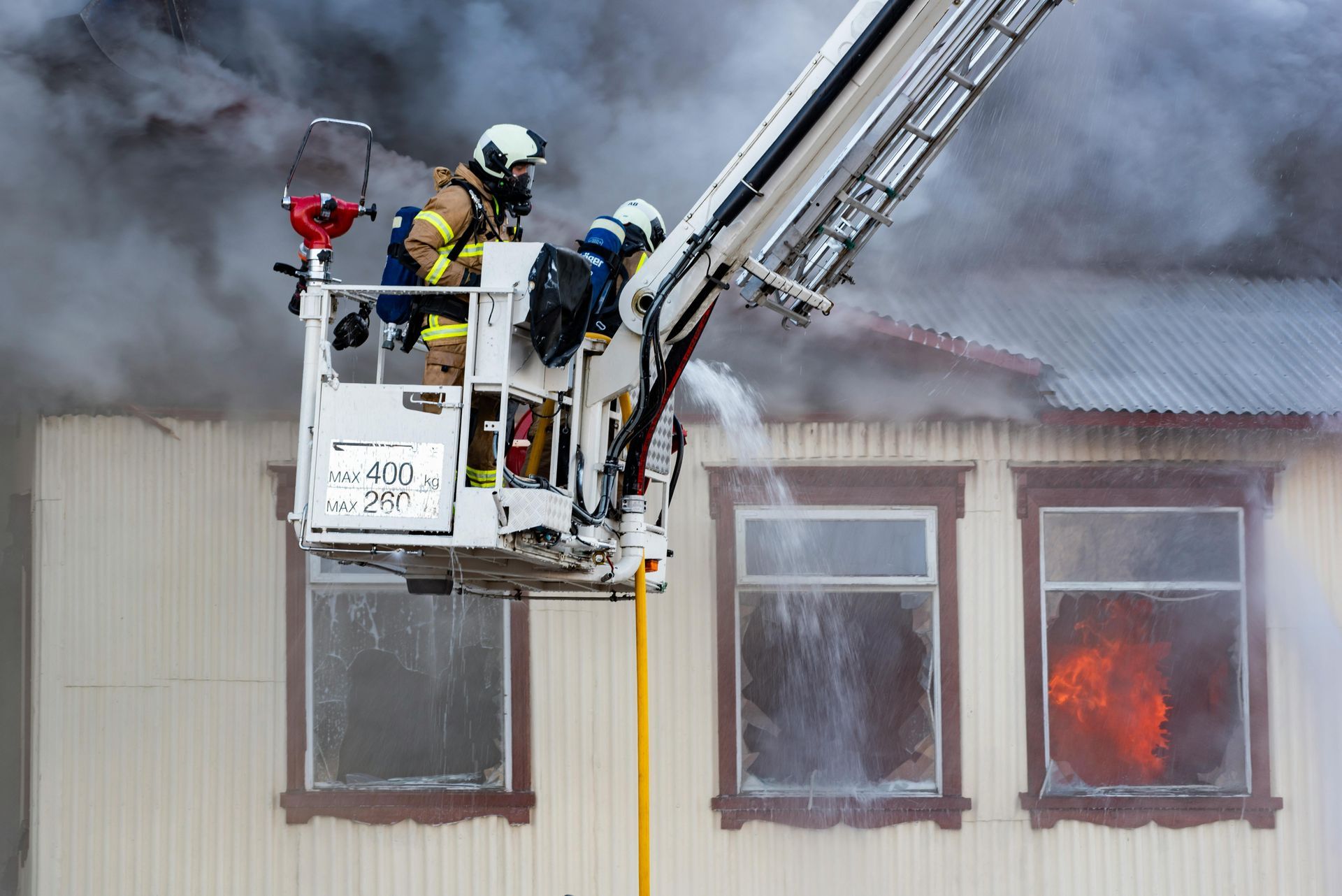SERVING QUINCY & ALL OF THE SOUTH SHORE
How to Spot Mold Before It Becomes a Problem in Your Home
Mold is one of the most common & sneaky problems that can wreak havoc in your home.

Unfortunately, by the time a mold infestation becomes obvious, the damage is already done, leading to costly repairs and potential health issues. As a homeowner, learning to spot mold early can save you significant time, money, and stress. We thought we’d take this opportunity to go through some of the basics, and additionally some of our best tips to identify mold before it becomes a major problem. At Atlantic Water Remediation, we frequently see firsthand how mold can grow unnoticed until it causes major problems. Everything seems fine one week when you go into your basement, and the next week, all of your belongings are green! So, how do we catch it?
What Is Mold, and Why Does It Grow in Homes?
Let’s start with a little Mold 101. Mold is a fungus that reproduces & spreads through homes and properties by releasing spores into the air, which then settle on other surfaces. If the conditions are right, those mold spores will grow in their new location. Mold THRIVES in a moist, humid environment (think about some of the really warm Springs we’ve had over the last few years here in the South Shore & Greater Boston). Common causes of mold growth include but are not limited to:
Leaks:
Plumbing issues such as old plumbing fixtures, or roof leaks that can create moisture spots in your home, potentially hidden behind a wall.
Humidity:
Coastal communities like those in the South Shore, where humidity levels often run high, are particularly prone to mold.
Flooding:
Even small amounts of standing water can lead to mold growth if not addressed quickly, or worse if they leave standing water unseen behind walls or fixtures.
Condensation:
Poorly insulated windows such as those in older homes, pipes, or HVAC systems can create moist environments ideal for mold.
Early Signs of Mold to Watch For
Catching mold early can make a huge difference - Instead of cleaning mold off of all your surfaces and belongings, you might be able to address a specific section of your home and put preventative measures in place that stop the spread in its tracks! Here are the key signs to look out for:
Musty Odor
Think of that old, musty furniture smell, or perhaps that damp, unpleasant basement smell. Trust your nose - Mold often produces a smell even before you can see it. If certain areas of your home—like the basement, attic, or under-sink cabinets - start to smell damp or earthy, mold may be the culprit, and may already be present.
Discoloration on Walls, Ceilings, or Wood
Mold can appear as black, green, or even white spots on surfaces. It’s often mistaken for dirt or soot, and can be hard to spot on surfaces like concrete, or fieldstone that is common in Greater Boston basements. In areas prone to moisture, like bathrooms or basements, keep an eye out for discoloration or staining on drywall, ceilings, or tile grout.
Water Stains or Damage
If you notice water stains on your walls or ceilings, there’s a very good chance mold is growing behind that surface. These stains may appear yellow, brown, or even just slightly darker than the surrounding area. If you’re seeing what you think are water stains, but the stains don’t dry or go away, you might be actually seeing mold.
Peeling or Bubbling Paint or Wallpaper
Moisture trapped beneath paint or wallpaper can lead to peeling, bubbling, warping, and cracking. Gaps in wood siding, older shingles that have gaps, or old flashing can lead to water entering your home or business, particularly during stormy weather. You may see signs of dampness on outer walls, but sometimes water can travel down rafters making it tricky to determine where the source of water is coming from. Bubbly paint or a wet wall can be an early indicator of mold hiding beneath the surface.
Health Symptoms
Even if mold isn’t visible, you or your family members may experience health symptoms such as sneezing, coughing, itchy eyes, or worsening asthma or allergies that just don’t seem to be caused by the typical cold or flu. If you find yourself or your kids experiencing symptoms that don’t seem to be resolving (they may appear to be worsening), these symptoms could be caused by mold spores circulating in the air. You can learn more about mold’s potential health effects from the Environmental Protection Agency (EPA).
Where to Check for Hidden Mold
Mold doesn’t just grow on obvious surfaces. It can also hide in less noticeable places, such as:
Behind Drywall:
Mold can grow inside walls when leaks or condensation occur.
Under Flooring:
Carpets and hardwood floors can trap moisture, creating the perfect environment for mold.
Inside HVAC Systems:
Ducts, vents, and air conditioning units can harbor mold, spreading spores throughout your home.
In Bathrooms:
Shower curtains, grout, and areas around sinks and tubs are common spots for mold.
Basements and Crawl Spaces:
These areas often have high humidity levels, making them ideal locations for mold.
Prevention is Key
We know this sounds cliché, but the best way to deal with mold is to stop it before it starts. Here are a few simple things you can do to prevent mold before it has a chance of taking hold in your home:
Keep Humidity Low
Keep the humidity level in your home and basement below 50%. The easiest way to do this is with a dehumidifier, which you can easily connect to drain into a drain, sump pump, or laundry sink for ongoing drainage. We love the ongoing draining option mainly because the easier it is for you, the more likely it will solve your issue - If you have to constantly empty your dehumidifier, there’s a chance that you don’t do it and end up with a mold problem anyway. The simpler you can make this for yourself, the better!
Fix Leaks as Soon as You See Them
Address plumbing or roof leaks as soon as you notice them. Even a small drip can lead to significant mold growth over time. If, due to affordability issues, you aren’t able to fix it right away, do everything possible to air out and dry out the area as much as you possibly can. While this may not work, leaving your wall or floor soaked with water poses far more hazards and likelihood of mold taking hold.
Maintain Good Ventilation
Ensure good airflow in your home, particularly in moisture-prone areas like kitchens, bathrooms, and laundry rooms. Open your windows every day (yes, even when it’s cold out!) Also, make sure your exhaust fans are on when cooking or showering.
Waterproof Your Basement
Basements are particularly vulnerable to mold due to the potential for groundwater to seep in, or find its way through cracks in an old foundation. Proper waterproofing, sump pumps, and drainage can help keep your basement dry.
Make Sure Wet Areas are Dried Quickly
Whether it’s a spill, condensation, or flooding, make sure to dry wet areas within 24-48 hours to prevent mold growth.
When to Call in the Pros
While small patches of mold can sometimes be cleaned up with household products, larger infestations or hidden mold require professional remediation. Signs you should call a professional like Atlantic Water Remediation include:
- Noticing any mold growth that concerns you is worth Calling Us.
- Recurring mold despite your best cleanup efforts.
- Health symptoms worsening in your household.
Finding mold growth in HVAC systems or structural components (which could mean it has spread through the home or business).
Our team specializes in mold damage repair and removal, as well as remediation. Our specialized equipment and the skill of our team allow us to locate, remove, and prevent mold in your home or business, and help you prevent it in the future. You can also learn more about professional mold remediation from OSHA.
If you’re finding yourself over your head with a mold issue,
always feel free to reach out with your questions. Whether you need a professional inspection, remediation, or advice on preventing mold, we’ve got you covered.
Contact us today for a consultation or stay tuned to our blog for more tips on keeping your home safe and healthy!

Service Area
Norfolk County
Suffolk County
Plymouth County
Bristol County
Navigate

Atlantic Water Remediation, Inc.
Quincy, Massachusetts
Serving the South Shore & Greater Boston for all their water, fire, sewage, and mold damage repair needs.
©2025 Atlantic Water Remediation Inc. | All Rights Reserved | Privacy | Accessibility | Cookies
Website Designed & Hosted with SimplicityDMS



